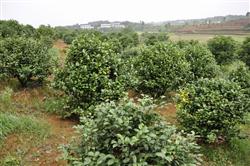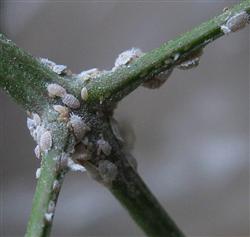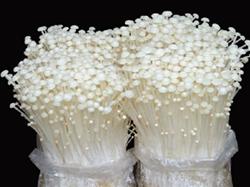How are camellias cultivated?

How to cultivate camellias? Please introduce semi-negative plants of the genus Camellia, which are suitable for growing under scattered light, are afraid of direct light exposure, and the seedlings need shade. However, long-term overshade is disadvantageous to the growth of camellia, thin leaves and less flowering, affecting the ornamental value. Adult plants need more light to facilitate flower bud formation and flowering. When cultivated in open field, the soil layer is deep and loose, the drainage is good, and the pH is 5: 6, but the alkaline soil is not suitable for the growth of camellia. Potted soil uses fertile, loose, slightly acidic loam or rotten leaf soil. [propagation methods] Cuttage, grafting, striping, sowing and tissue culture are commonly used. Cutting propagation: the most suitable is about the middle of June and the end of August. The semi-mature branches of the same year with full external tissue, complete leaves and full leaf buds were selected as cuttings, which were 8 cm long and 10 cm long, with 2 leaves at the apex. When cutting, the base takes a little old branch as far as possible, it is easy to form callus after insertion, and the root is fast. Cuttings cut early in the morning, to cut along with the cutting, insert the substrate of about 3 cm, cuttings require leaves to hand over each other, after cutting with fingers. It is better to insert it shallowly, so that it can heal and take root quickly. The inserting bed should be shaded, spray the leaf surface every day, keep it moist, keep the temperature at 20: 25 ℃, heal about 3 weeks after insertion, and take root after 6 weeks. Transplant into a pot when the root is 3-4 cm long. When cutting, 0.4% 0.5% indolebutyric acid solution was dipped in the base of the cuttings for 2-5 seconds, which could obviously promote rooting. Grafting propagation: often used in varieties where it is difficult for cuttings to take root or have few propagation materials. The survival rate of grafting was the highest when the new shoots were semi-qualitative from May to June, and the shoots sprouted quickly after grafting. The rootstock is mainly Camellia oleifera, which is collected in October, stored in winter, sown in early April of the following year, and can be used for grafting when the seedling grows to 4cm. Using the method of tender branch splitting, cut off the germ of the bud rootstock with a blade, cut it longitudinally along the pith in the center of the cross section of the Hypocotyl, then take a section of the scion of Camellia, and cut the base under the node into a positive wedge, immediately insert the cut scion into the bottom of the crack of the rootstock, aim at the cambium on both sides, bind it with cotton thread, and cover it with a clean plastic pocket. Remove the pocket after about 40 days, and sprout in about 60 days. Striping propagation: in the rainy season, a robust 1-year-old branch is selected, 20 cm away from the top, peeled in a ring shape, 1 cm wide, bound with rotten leaf soil and covered with plastic film, rooting after about 60 days, cut off can be directly potted, the survival rate is high. Sowing and propagation: suitable for single or semi-double varieties. The seeds are ready for sowing when they mature in the middle of October. Shallow sowing is better, vermiculite as substrate, covering 6 mm, room temperature 21 ℃, light for 10 hours per night, can promote seed germination, germination begins 15 days after sowing, seedling height reaches 8 cm within 30 days, seedlings are transplanted when they have 2 or 3 leaves. Tissue culture and propagation: the common seedlings of explants were cut into 1cm long after routine disinfection and inoculated on MS medium supplemented with kinetin 1mg / L, 6-benzylaminoadenine 1mg / L and indole acetic acid 0.1mg / L. After 4 weeks of culture, only calli were formed, but not buds. After transferred to the new medium, a single branch of 4cm was formed, then soaked in 0.5mg / L indolebutyric acid solution for 20 minutes, then transferred to 1/2MS medium, and roots grew after 4 weeks. After growing on long root medium for 8 weeks, the seedlings were transplanted to a basin filled with perlite and peat. [cultivation management] Camellia flower pot is commonly used in 15-20 cm pot. Camellia root system is fragile, transplanting should be careful not to hurt the root system. Potted camellia, change pots after blooming in spring or September to October every year, cut off only long or dead branches, and replace them with fertile rotten leaf soil. Camellia likes to be moist, but the soil should not be too wet, especially potted plants, which can easily cause rotten roots. On the contrary, impermeable irrigation, too dry, leaves curling, will also affect the development of flower buds. After changing the pot of camellia in spring, there is no need to apply fertilizer immediately. During the vigorous growth period of stems and leaves after the beginning of summer, fertilize once a month or use "Huiyou" 21 Mel 7 Mel 7 acid fertilizer. From budding to flowering in September, the phosphorus and potassium fertilizer was applied twice. Camellia begins to form flower buds in late summer and early autumn. One or two buds should be left on each shoot, not too many, so as not to consume nutrients and affect the flowering of the main buds. Pay attention to the position of leaf buds when picking buds in order to keep the plant shape beautiful. At the same time, the dry waste buds are easily removed. [pest control] when camellia is cultivated indoors or in greenhouse, if it is not well ventilated, it is vulnerable to red spiders and shell insects, it can be sprayed or washed with 1000 times omethoate EC. The air humidity is high during the plum rain season, and anthracnose often occurs. It can be sprayed with the same amount of Bordeaux liquid or 1000 times of carbendazim wettable powder. [postpartum treatment] Camellia has a beautiful crown, bright green leaves, large and colorful flowers, and a long flowering period, coinciding with New Year's Day and the Spring Festival. Potted plants decorate the guest room, study and balcony, showing an elegant and luxurious atmosphere. Planted in the courtyard, accompanied by flower walls and mountains and rocks in front of the pavilion, the scenery is natural and pleasant. In the process of storage and transportation, it is necessary to prevent high temperature and air drying, otherwise buds and flowers are easy to fall off and affect the quality. Click to get more camellia planting techniques click to get more flowers and trees planting techniques
- Prev

How does camellia prevent pests?
How does camellia prevent pests? Please introduce the control methods common on the Camellia scale insects are mainly red wax medium, blowing cotton medium, chaff shield medium, tea brown round medium four kinds. Red wax: female adult shell waxy thick, rose red first, then purple, 3 mm to 4 mm in diameter, top umbilicus, Zhou...
- Next

Cultivation techniques of Flammulina velutipes: what kind of environment is suitable for the growth of Flammulina velutipes?
What kind of environment is suitable for Flammulina velutipes to grow? Flammulina velutipes is a kind of wood rot fungus, which can make use of monosaccharides, cellulose, lignin and other compounds in wood. However, the ability to decompose wood is weak, hard trees after felling, do not reach a certain degree of decay can not grow fruit bodies. Old broad leaves.
Related
- Fuxing push coffee new agricultural production and marketing class: lack of small-scale processing plants
- Jujube rice field leisure farm deep ploughing Yilan for five years to create a space for organic food and play
- Nongyu Farm-A trial of organic papaya for brave women with advanced technology
- Four points for attention in the prevention and control of diseases and insect pests of edible fungi
- How to add nutrient solution to Edible Fungi
- Is there any good way to control edible fungus mites?
- Open Inoculation Technology of Edible Fungi
- Is there any clever way to use fertilizer for edible fungus in winter?
- What agents are used to kill the pathogens of edible fungi in the mushroom shed?
- Rapid drying of Edible Fungi

